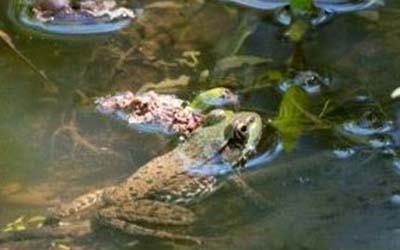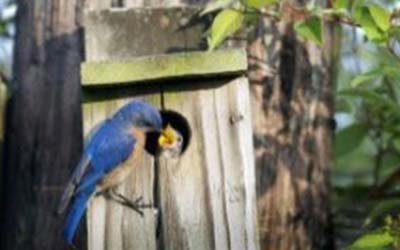| Some of this week’s stories may reflect the impact of COVID-19 and how the Michigan Department of Natural Resources has adapted to meet customers’ needs and protect public health and safety. We will continue to share news and information about the best ways to enjoy our state’s natural and cultural resources.
Follow our COVID-19 response page for FAQs and updates on access to facilities and programs. For public health guidelines and news, visit Michigan.gov/Coronavirus and CDC.gov/Coronavirus.
Here’s a look at some of this week’s stories from the DNR:
See other news releases, Showcasing the DNR stories, photos and other resources at Michigan.gov/DNRPressRoom.
PHOTOS: Links to larger, high-res versions of some of the images used in this news digest are available below.
 Want to see more stunning pictures like this, taken by Michigan state parks photo ambassador Brandon Johnson at Newaygo State Park in Newaygo County? Visit Instagram.com/MiStateParks to explore photos and learn more about the photo ambassadors! For more on the program, call Stephanie Yancer at 989-274-6182. Want to see more stunning pictures like this, taken by Michigan state parks photo ambassador Brandon Johnson at Newaygo State Park in Newaygo County? Visit Instagram.com/MiStateParks to explore photos and learn more about the photo ambassadors! For more on the program, call Stephanie Yancer at 989-274-6182.
 Meet Paige, a Huron Pines AmeriCorps member serving with the DNR, who is embarking on a statewide tour of Michigan’s rustic state forest campgrounds. Meet Paige, a Huron Pines AmeriCorps member serving with the DNR, who is embarking on a statewide tour of Michigan’s rustic state forest campgrounds.
Project Rustic is part of a strategy for improving information for rustic and backcountry travelers. This statewide RV tour – the RV should hit the road starting next week! – was Paige’s brainchild while serving her first term with the DNR last year. She felt one of the best ways to capture the details of each place was to experience it herself.
“Today’s traveler turns to the internet first for information, which is why the DNR has prioritized improving the depth and accuracy of data available,“ said Ami Van Antwerp, a DNR communications specialist. “Having Paige take the lead made total sense because she represents the next generation of travelers and is taking that unique perspective with her.”
Throughout her five-month tour, Paige – along with her four-legged companion, Willow – will be living in an RV provided by General RV and traveling to Michigan’s most remote places. Her mission is to collect GPS data for mapping, update the DNR’s photo library, and evaluate the department’s existing directional signs that tell campers where to go and the interpretive signs that explain an area’s or site’s history. It’s all part of providing the best backcountry and rustic camping experience for visitors – both while they’re planning their camp and when they’re on site.
Follow Paige on the Project Rustic webpage, where she’ll share tips and tricks for traveling rustic and more. Learn more about Michigan’s state forest campgrounds and trails to plan your own adventure at Michigan.gov/StateForestCampgrounds.
Questions? Contact Ami Van Antwerp at 517-927-5059. |
 In Michigan and across the nation, burning leaves and backyard waste is a common activity that, if done carelessly, can have great costs. It’s consistently the No. 1 cause of wildfires. In Michigan and across the nation, burning leaves and backyard waste is a common activity that, if done carelessly, can have great costs. It’s consistently the No. 1 cause of wildfires.
Use this quick checklist for tips on improving your backyard burn barrel to reduce chances of wildfire:
- Set the barrel on level concrete blocks or a similar hard, nonflammable surface.
- As required for burn barrels, use a cover or screen with holes a quarter of an inch or smaller to prevent flying embers.
- Set the barrel far away from flammables, like woodpiles, and trim any overhead tree branches.
- Always keep a water source and shovel nearby, and never leave a fire unattended.
- Before lighting a fire, check the weather. Don’t burn on a dry, windy day.
|
“Paper, leaves and natural materials are permitted to be burned,” said Paul Rogers, DNR fire prevention specialist. “However, plastic, hazardous materials, foam and other trash are illegal to burn and release harmful chemicals into the air.”
The safest burn barrel isn’t one at all – it’s a compost bin! Paper, leaves and other biodegradable items that commonly are burned can be composted to create nutrient-rich soil. Learn how at Michigan.gov/EGLEcompost. Materials like cardboard and paper also can be recycled.
Get fire safety tips at Michigan.gov/PreventWildfire.
Questions? Contact Paul Rogers at 616-260-8406.
 This week is National Public Safety Telecommunicators Week – a great time to recognize the 14 devoted full-time dispatchers behind the DNR’s Report All Poaching hotline. This week is National Public Safety Telecommunicators Week – a great time to recognize the 14 devoted full-time dispatchers behind the DNR’s Report All Poaching hotline.
Part of the department’s Law Enforcement Division, the communications center is recognized as a leader among North American conservation law enforcement agencies – a testament to staff’s 24/7 commitment and professionalism. The center uses advanced technology similar to that used by 911 call centers, making it an essential resource for receiving and managing wildlife and other natural resource criminal correspondence and information for DNR conservation officers and federal, state and local law enforcement agencies.
Dispatchers receive a variety of tips and complaints, covering situations like hazardous burning, reckless ORV operation on state trails, illegal dumping or taking an over-limit of wildlife. When someone calls or texts the RAP hotline (800-292-7800), staff gathers all necessary information, which may include criminal background checks, to communicate the complaint and details to the nearest conservation officer.
In 2020, the RAP hotline received more than 41,000 total calls from the public – a 27% increase over 2019. From March through December 2020, throughout the beginning of the COVID-19 pandemic, the team received 29% more calls compared to the same time frame in 2019. The center also recently upgraded its technology, allowing people to send tips or complaints by text – which accounted for 20% of contacts in 2020.
Curious about all that the RAP staff does for Michigan’s natural resources? Learn more at Michigan.gov/RAP.
Questions? Contact Lt. Jen Wolf at WolfJ1@Michigan.gov. |
PHOTOS: Larger, high-resolution versions of some of the images used in this newsletter are available; credit Michigan Department of Natural Resources unless otherwise noted.
Project Rustic: Paige, a Huron Pines AmeriCorps member serving with the DNR, who is embarking on a statewide RV tour of Michigan’s rustic state forest campgrounds, shown here with her dog Willow.
King Lake: A scene from King Lake State Forest Campground in Baraga County, one of Michigan’s options for rustic camping.
DNR RAP hotline call center: A Report All Poaching hotline dispatcher manages calls on opening day of the 2018 firearm deer season.
|






